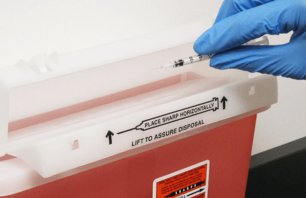Occupational Safety and Health Administration (OSHA) standards play a critical role in safeguarding the well-being of employees in different industries, including healthcare. These regulations outline the responsibilities of employers in recording and reporting injuries or illnesses that occur in the workplace. Failure to comply with OSHA standards can result in citations and monetary penalties, making it crucial for employers to be well-informed and diligent in adhering to the requirements.
The OSHA standard 29 CFR Part 1904 governs the recording and reporting of work-related injuries and illnesses. Employers must maintain accurate records of these incidents and submit the necessary information to OSHA as required.
Frequently Asked Questions
What Must Be Recorded?
Employers must record each new work-related fatality, injury, or illness.
What Specific Work-Related Incidents Must Be Recorded?
- Death
- Days away from work
- Restricted work or transfer to another job
- Medical treatment beyond first aid
- Loss of consciousness
- A significant injury or illness diagnosed by a physician or other licensed healthcare professional
- Needlestick or sharps injuries from objects contaminated with another person’s blood or other potentially infectious material (OPIM)
- Medical removal under surveillance requirements from an OSHA standard (i.e., 1910.1048 concerning occupational exposure to formaldehyde)
- Occupational hearing loss if there is a standard threshold shift in hearing
- Occupational exposure to Tuberculosis (TB) and subsequent TB infection
What Forms Should Be Used for Recording?
- OSHA 300: log of work-related injuries and illnesses
- OSHA 300-A: summary of work-related injuries and illnesses
- OSHA 301: the injury and illness incident report
Can Other Forms Be Used for Recording?
- Equivalent forms that have the same information as the OSHA 300 forms can be used.
- Forms must be readable, understandable, and completed using the same instructions as the OSHA 300 form they replace.
What Is the Timeframe for Recording?
- Seven calendar days of receiving information
- Keep on file for five years
How to Handle Privacy Cases?
OSHA has strict requirements for protecting the privacy of injured and ill employees. An employer cannot record the employee's name on the OSHA 300 log for certain privacy concern cases. Instead of writing a name, the employer must enter "privacy case" in the space provided and maintain a separate confidential list containing the case numbers and employee names. This measure safeguards the employee's privacy in case another employee requests access to the OSHA 300 log. Privacy cases include:
- Injury or illness to an intimate body part or reproductive system
- Injury or illness resulting from a sexual assault
- Mental illness
- HIV infection, Hepatitis, or TB
- Needlestick injuries and cuts from sharp objects contaminated with another person’s blood or other potentially infectious materials (OPIM)
- Other illnesses, if the employee voluntarily requests that his or her name not be entered on the log
Which Employers are Partially Exempt From These Requirements?
Workplaces with 10 or fewer employees:
If the company had 10 or fewer employees (entire company, not individual locations) at all times during the last calendar year, it is exempt from keeping OSHA 300 Forms. This doesn’t apply if: OSHA or the Bureau of Labor Statistics (BLS) informs the employer in writing that they must keep records. This is referred to as a partial exemption because the reporting requirements of 1904.39 still apply.
Establishments in certain industries:
If the employer is in an industry group listed in Appendix A of 29 CFR 1904 Subpart B [determined based on the North American Industry Classification System (NAICS)], then it is exempt from keeping OSHA 300 Forms. This doesn’t apply if OSHA or BLS specifically requests recordkeeping or information submission. This is also a partial exemption because the reporting requirements of 1904.39 still apply.
What Are The Details For The Recent Update To The E-Submission Requirements of 29 CFR 1904.41?
- The Final rule becomes effective on January 1, 2024.
- A new list of high hazard industries were added: Appendix B to Subpart E.
- Establishments with 100 or more employees and listed in Appendix B to Subpart E must electronically submit information from their OSHA forms 300, 300-A, and 301 annually.
- OSHA updated the NAICS codes in Appendix A to Subpart E.
- Establishments with 20-249 employees and listed in Appendix A to Subpart E will continue to submit information from OSHA form 300A annually.
- Establishments with 250 or more employees, and not partially exempt from recordkeeping, will continue to electronically submit information from OSHA form 300A annually.
- Companies’ legal names must now be included in electronic submissions; OSHA will post public data while safeguarding individuals' privacy by removing identifying information.
Learn how Stericycle’s Steri-Safe® OSHA Training and Compliance Solutions can help your organization manage these requirements by providing access to customizable templates for injury and illness prevention plans.



